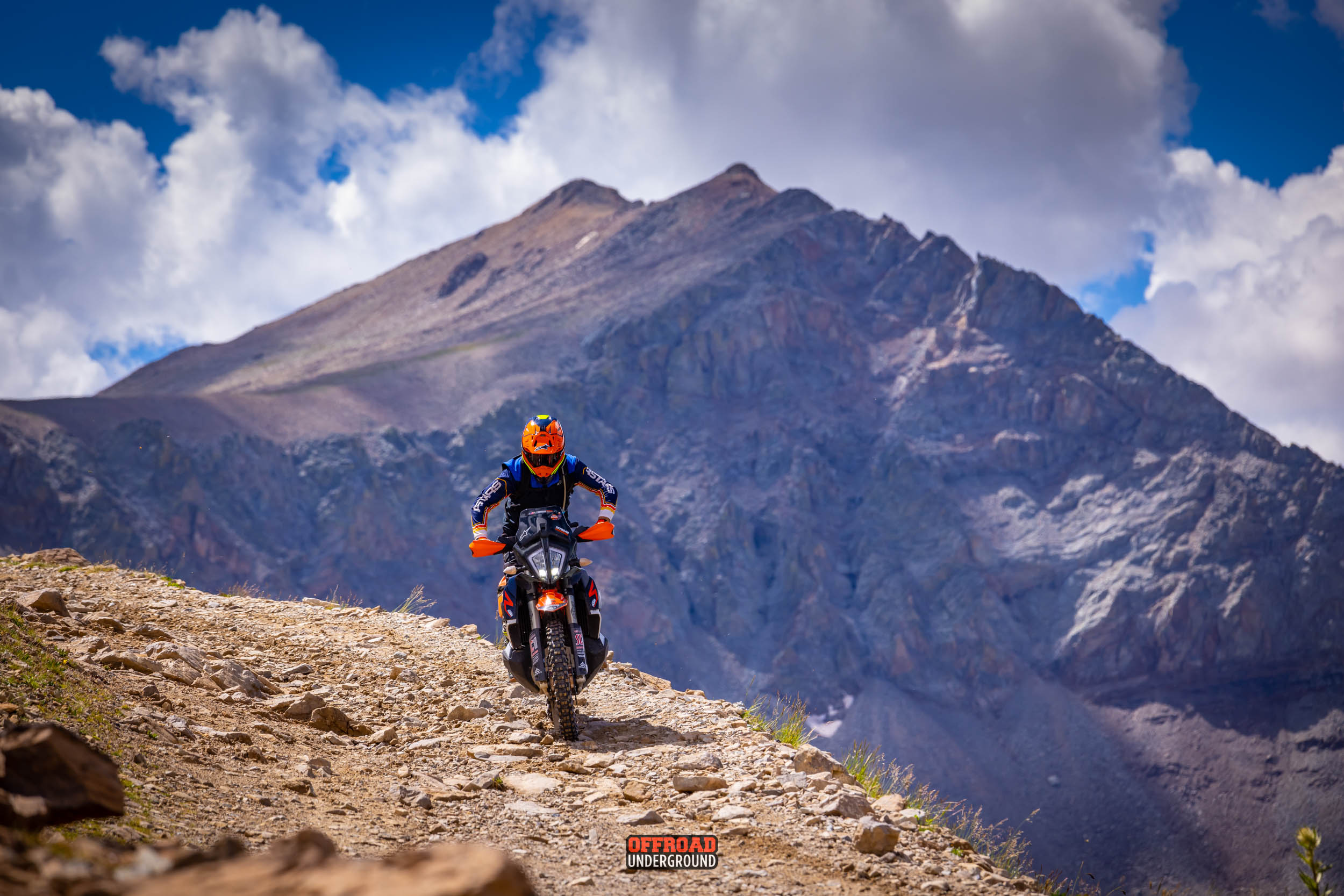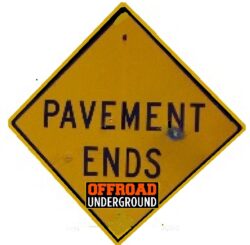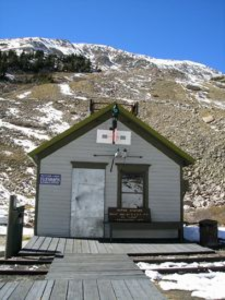
Hancock Pass, the Palisades and the Alpine Tunnel
Though Hancock Pass and the Alpine Tunnel are mutually exclusive, today in the summertime, you can use Hancock Pass to access the Alpine Tunnel.
Hancock Pass starts on the east side of the Divide near St. Elmo in Chalk Creek Canyon, and ties in with the old Denver, South Park & Pacific railroad line to Pitken.
- You can also use Tomichi Pass, Cumberland Pass and the old Denver, South Park & Pacific Railroad Line from Pitkin to access the Alpine Tunnel.
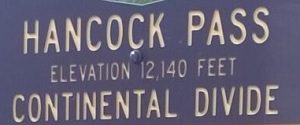
Hancock Pass is a high mountain pass that crosses on the Continental Divide at an elevation of 12,140 feet.
- Hancock Pass was a mining route in the 1880s, but was not significant commercially.
- The Pass was a wagon and mule route over the Continental Divide.
- The Divide on this Pass is the border between the Gunnison and San Isabel National Forests.
- Hancock Pass today is a challenging Jeep road.
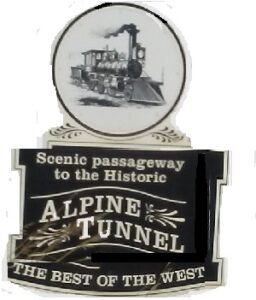
The road up the pass from the east from Chalk Creek and St. Elmo is of moderate difficulty, very rocky and is quite steep in several sections.
The Road on the west side is even steeper and rockier.
If Turn Of The Century Railroads, Mining History, and Rocks are of interest…Keep reading:

HANCOCK PASS
Hancock Pass is one of the most iconic looking off-road passes in the Rocky Mountains.
- The Pass can provide access to the Alpine Tunnel National Historic District.

- Historic Hancock pass is located around 15 miles west of the old railroad stop town of Pitkin.
- The road on both sides of the Pass was once the railbed for the Denver, South Park & Pacific railroad.
- Which traveled through the Alpine Tunnel (elevation 11,523 feet) to the mines of the Gunnison mining district.
- The Denver, South Park & Pacific Railroad did not go over Hancock Pass, which was too steep for a train.

- Hancock Pass could be considered a Hero Route of moderate difficulty.
- There are other Options to get the the Alpine Tunnel Historic District.
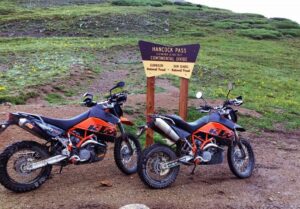
Instead of using or tunneling under Hancock Pass, the DSP&P railroad built the Alpine Tunnel, past the spectacular rock cliff at the Palisades.
- Hancock Pass itself drops over the Divide and intersects with Tomichi Pass.
- Then connects with the western side of the railroad line as it winds its way to the historic Railroad town-site of Pitkin, on the old DSP&P Railbed.
- On the Eastern side the the old railbed intersects with the ghost town of St. Elmo and Chalk Creek Canyon.
- Then further down the canyon goes past the equally historic Mt. Princeton Hot Springs.
- There is also the Tomichi Pass option, a Dual Sport option to the Alpine Tunnel from the West Side.
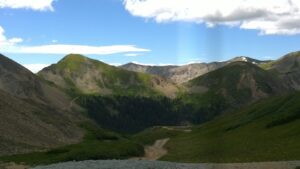


The Alpine Loop from Pitkin
The route on the west side begins at the old Quartz townsite, 3 miles northeast of Pitkin on the Cumberland Pass Road at the Alpine Tunnel Road turnoff.
- Remains of the Old Midway water tank lie 3 miles in along the route.
- Which was the halfway point between Pitkin and the Alpine Tunnel.
- Two miles further is the restored Tunnel Gulch water tank.

- The route continues past the townsite of Woodstock, which was totally wiped out by a snow slide in 1884, killing 13 people.
- The remnants of the old Woodstock water tanks remain.
- You will pass the Sherrod Loop which is marked by an information board.
- This loop enabled the trains to turn and remain on the sunnier south side of the valley.
- Then it’s onto the Spectacular Palisades
The Palisades
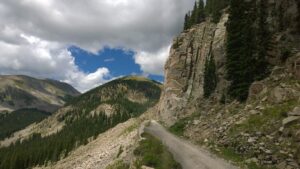
- The Palisades is one of the most spectacular features on any old railroad in entire Rocky mountains.
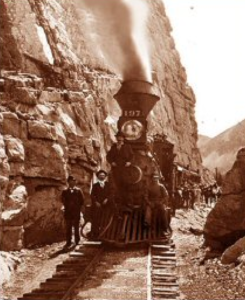
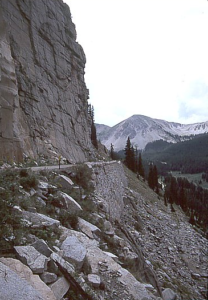
- The Railline at the Palisades at 11,300 feet were on a man-made terrace.
- Which enabled the train to travel along a spectacular, steep cliff face.

- Hand-cut stones, dry stacked 33 ft. high and 425 ft. long, support the ledge at the Palisades
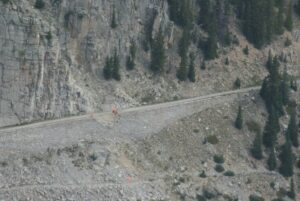
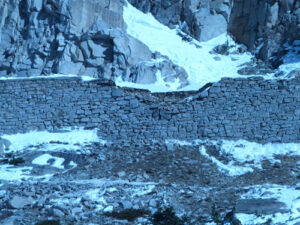
- This damage from a snow slide occurred at the Palisades several years ago, and the road to the reconstructed Alpine Station had been closed, to Jeeps…

The Alpine Tunnel, Colorado – An Engineering Marvel
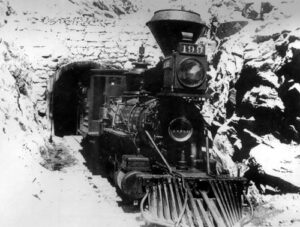
Situated about 18 miles Northwest of Buena Vista is the historic Denver, South Park & Pacific narrow gauge railroad through the Alpine Tunnel.
The DSP&P came past Buena Vista after traversing down Trout Creek Pass, and then went up Chalk Creek Canyon past Mt. Princeton Hot Springs.
Beyond the west portal exit of the tunnel, stood the Alpine Tunnel Station, the highest railroad station in the nation; as well as a turntable, water tank, stone boarding house, and engine house that was large enough to house six engines.
- Beyond the tunnel, the Denver, South Park & Pacific tracks continued west on to Gunnison.
- Once the Railroad was complete, the engineering marvel was a welcome relief.
- To all of those who were previously required to haul supplies and mail back and forth over the treacherous and longer passes of Tin Cup, Cottonwood, Altman and Hancock.
- Once the highest railroad tunnel in the world, at an altitude of 11,523 feet, the Alpine Tunnel was the first tunnel to be built through the Continental Divide.
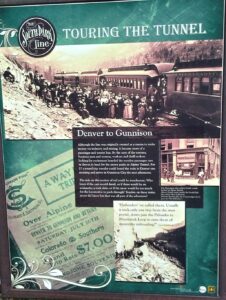
The Denver, South Park & Pacific Railroad began the work of connecting St. Elmo to Pitkin, Colorado in November 1879.
- The Railroad owners anticipating that the mineral-rich area would be the next big mining “bonanza.”
- As many as 10,000 different men worked to build the line and the tunnel at various times.
- Laborers worked for $3.50 per day.
- Explosives men worked for $5.00 per day.
- They were often forced to go from their worksite to their cabins in groups, in order to avoid being lost in the snow.
- Teams of workers on both sides of the Alpine Tunnel started digging and blasting in November 1879.
- With the intent of connecting St. Elmo to Pitkin via the rail line.
- Approximately 350 workers on one end, and 400 workers on the other, labored through brutal winters and summers until July 1881, when the two crews met each other in the tunnel.
- The length of the Alpine Tunnel is 1771.7 feet within the mountain.
- The headings were off by very little, amazingly accurate considering that it was a blind bore, on a curve laid to opposing grades.
- An engineer’s drawing stored in the restored Telegraph Station validates the accuracy of the job.

The Railroad had plans to complete the tunnel within six months.
- But those were very ambitious plans, especially starting the project in the middle of winter.
- It would actually take the railroad more than two years to complete the tunnel.
- And cost them far more than they had planned, coming in at about $300,000 and some $180,000 more than had initially been budgeted.
- Due to crumbling granite in the tunnel, over 400,000 board feet of California redwood was required to support and encase 80% of the Tunnel.
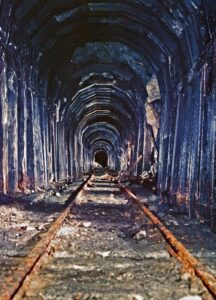
The two crews had met each other in the tunnel in July 1881, but it would be another year before it was ready for the train.
- When the first narrow gauge train came through in July 1882, the tunnel was 1,772 feet long and over two miles above sea level.
- 500 feet below Altman Pass (later renamed Alpine Pass) the Alpine Tunnel was the most expensive railroad tunnel built up until that time.
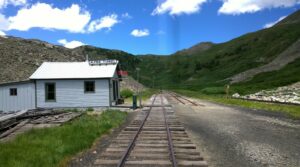
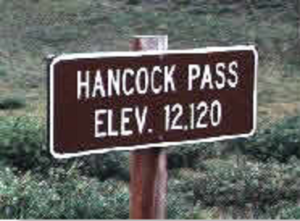
All along the tracks were a number of small settlements.
- Some to service the railroad and others that housed the many miners of the area.
- These towns included Woodstock, Quartz, and Sherrod, as well as Pitkin at the western end.
- St. Elmo on the eastern end of the line through the mountain.
- Even though the weather was harsh at that elevation, things went relatively well for the line and the tunnel for the first several years.
- However, in March 1884, the town of Woodstock was completely destroyed by an avalanche.
- Burying 18 people, 13 of whom died. Six were children.
- The settlement, which had as many as 200 residents, was never rebuilt.
- All that remains today of Woodstock are a few stone foundations, some rotting timbers, and a historic marker.
- Due to the high elevation and the harsh winter conditions, the tunnel was closed during most winters between 1887 and 1894.
- In the meantime, the Denver, South Park & Pacific Railroad went into receivership.
- In August 1889 it re-emerged as the Denver, Leadville & Gunnison line, under control of the Union Pacific Railroad.
- However, that line, too, would go into receivership five years later.
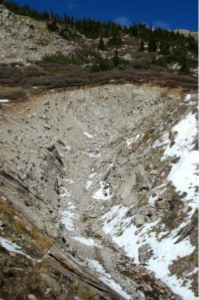
In 1895, the tunnel faced two more disasters.
- During the reopening of the tunnel after the winter, four crew members suffocated.
- Not long after, a train wreck occurred, killing two men near the tunnel in May.
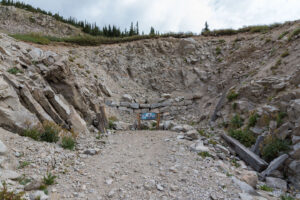
The line continued to struggle financially.
Until the Colorado and Southern Railway Company was formed with the merger of the Denver, South Park & Pacific, Union Pacific, and Denver & Gulf railroads in 1899.
- The line was plagued with accidents and storms during much of its 30-year life.
- In 1901, a train with one passenger coach and ten loaded freight cars was completely buried by snow.
- In 1904, another train wreck occurred west of the tunnel.
- Two years later, a fire destroyed the engine house and another collision occurred inside the tunnel.
- Finally, the railroad company gave up on the dangerous and accident-prone tunnel.
- The last train came through in November 1910.
- A decade later, a majority of all of the track had been removed.
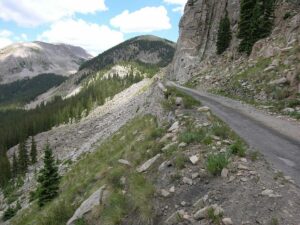
Today, the area is known as the Alpine Tunnel Historic District.
- Which consists of a two hundred foot wide right of way along thirteen miles of original Denver, South Park & Pacific rail bed.
- Between the old town site of Quartz on Cumberland Pass and the intersection with Hancock Pass.
- Then past the Palisades to the reconstructed old Telegraph Station below the Eastern Portal of the tunnel.
-

Restored Telegraph office at the west portal of the Alpine Tunnel
The east portal of the tunnel collapsed many years ago and the west portal is covered by landslides.
- The Alpine Tunnel District still provides a vivid peek into its prosperous early years.
- From Hancock Pass on the east side, the former rail bed is now a hiking trail.
- The west side can be accessed, also on the old rail bed, by OHV’s to the restored railroad telegraph station house.
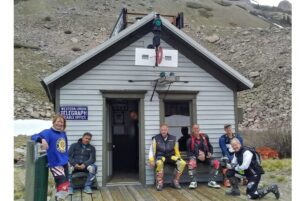
You can access the Alpine Tunnel at several rides with Exit Tours MC from June to October.
- From Hancock Pass, Cottonwood & Cumberland Passes, Tomichi Pass or Blacksage & Waunita Passes via Pitkin.
- There are also 3 outstanding loops where you can incorporate Marshall and Monarch Passes.

